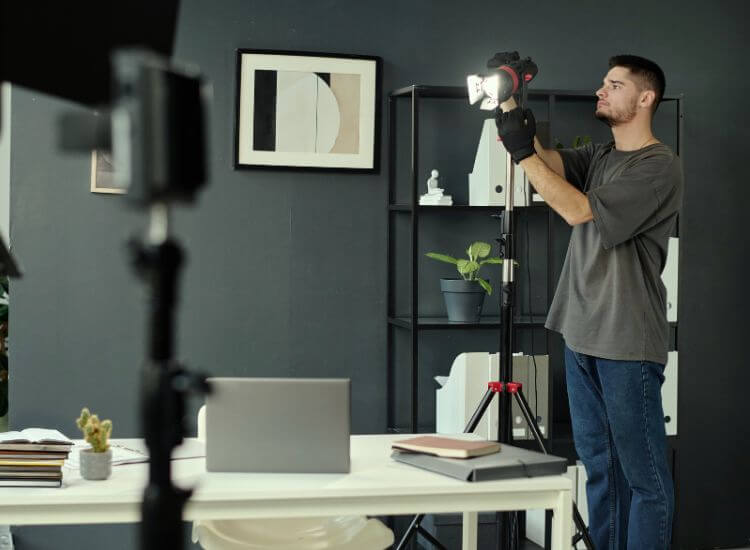



Video is one of the most effective ways to connect with an audience. Research shows that 93 percent of marketers see a positive return on investment from video, proving its value as more than just a passing trend. Yet not every video delivers results. Some capture attention and inspire action, while others lose viewers within seconds.
What separates the two is strategy. Engaging videos are built through planning, clear scripting, thoughtful visuals, and strong delivery. In this guide, you will find practical methods to create content that not only attracts views but also builds trust and leaves a lasting impression.

Engagement is the true measure of a video’s success. A high view count may look impressive, but the impact is limited if viewers leave after a few seconds. Engagement goes deeper. It shows that people are watching, interacting, and responding.
Focusing on engagement shifts your goal from chasing numbers to lasting meaningful connections.
Strong videos begin long before the camera starts recording. Pre-production shapes the final outcome by clarifying goals, defining direction, and eliminating unnecessary work. A solid plan keeps your process efficient and aligned with your message.
Ask yourself:
Outlining your video in a storyboard or bullet points helps your message flow naturally and keeps filming organized. For more clarity on choosing formats that support business and marketing goals, you can explore this guide on effective business video types as a planning reference.

A script is the foundation of your message. Even if you plan to improvise, having a guide keeps you focused and prevents unnecessary repetition.
The best scripts feel conversational. Picture yourself talking to one person who values your message. When your words feel natural, your delivery will too.
Delivering lines on camera can feel intimidating. Forgetting a sentence or losing your place disrupts your flow and can make you seem less confident. Teleprompter.com helps solve this problem by displaying your script on screen while you maintain natural eye contact with the camera.
For influencers, educators, and professionals who film regularly, Teleprompter.com is an efficient way to stay consistent and confident on camera—turning every recording session into a smooth, stress-free experience.

The way your video looks influences how it’s received. A strong message can lose power if visuals feel dull or distracting. Attention spans are short, so visual storytelling helps keep people watching.
Visual storytelling does not always require professional equipment. Many successful creators use smartphones paired with thoughtful technique. The key is intentional setup and attention to detail.
Editing transforms raw footage into a compelling story. It’s where pacing is set, distractions are removed, and the overall polish comes together.
Good editing feels seamless. Viewers shouldn’t notice the edit itself but instead experience the video as smooth and enjoyable.
A video that performs well on one platform may fail on another. Video optimization involves tailoring file sizes, resolutions, and lengths for each channel. If you ignore platform quirks, your content might appear cut off or grainy, which affects engagement.
Technical details matter too. Compress large files to prevent buffering, adjust resolution for platform standards, and test how your video plays across devices. A seamless experience keeps viewers from dropping off.

Data reveals how your video performs. You might think your content looks spot-on, but you need real numbers to confirm success. A few metrics can help you see strengths and weaknesses:
Analyzing these numbers helps you see where to adjust. For example, improving pacing can increase watch time, while sharper thumbnails can boost CTR.
A video requires effective promotion to maximize its reach. Rather than limiting your content to a single platform, implement a comprehensive video marketing strategy by sharing your work across various channels where your target audience is active.
Strategic promotion ensures your video finds the right people instead of getting lost in crowded feeds.
Creating engaging videos is about combining preparation, execution, and strategy. Each stage plays a role, from pre-production to post-promotion.
Your videos do not need a massive budget to succeed. With planning, the right tools, and a personal touch, you can create content that captures attention, builds loyalty, and drives meaningful results.
Bring more focus and consistency to your videos. Sign up at Teleprompter.com to access a teleprompter app built for creators like you.
An engaging video grabs attention fast, tells a clear story, looks polished, and feels authentic. Strong visuals, pacing, and confidence keep viewers watching.
Short clips (under 60 seconds) work best on TikTok or Reels. Tutorials and longer videos fit YouTube better—focus on pacing and value, not length.
No. A smartphone, good lighting, and clear audio can go far. Planning, scripting, and editing matter more than pricey cameras.
It keeps your delivery natural and confident by showing your script while you maintain eye contact. It eliminates the need for memorization, reduces pauses, and enhances the smoothness of your delivery.
Check analytics like watch time, retention, and engagement rate. If viewers watch longer and interact more, your video is working.
Yes. Teleprompters help influencers stay on message, save time, and deliver confidently—creating polished videos that still feel authentic.



